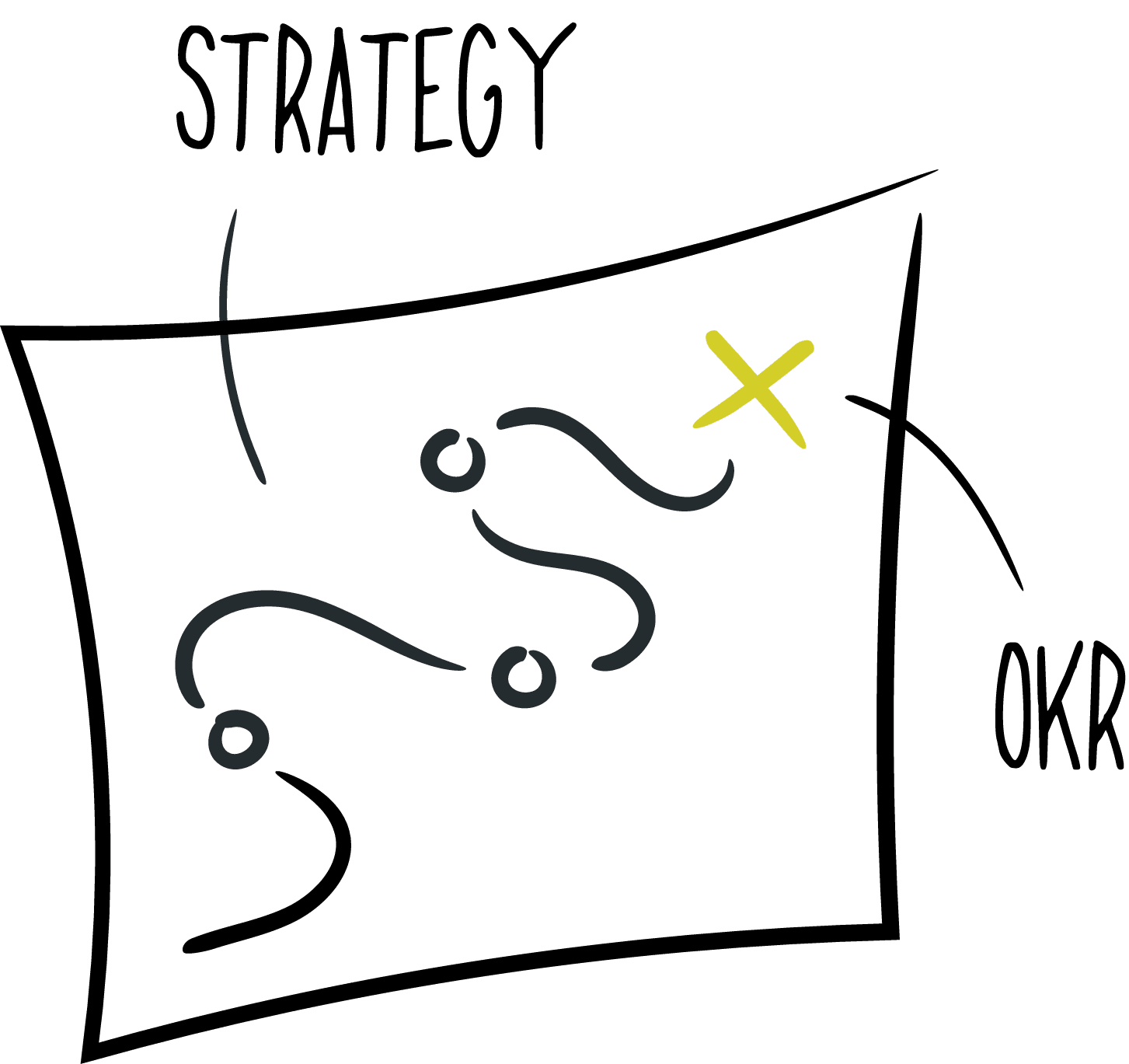Don’t confuse OKRs and strategy
Wednesday, December 6, 2023
I want 50% sales growth in my area. My friend wants to open ten new franchises next year. Another wants to capture a 40% market share.
How do our strategies sound to you? Are we ready to take them into the next year, or do they seem shortsighted? If you thought the latter, you’re right—these aren’t strategies at all! They’re OKRs.
I’ve noticed that the line between OKRs and strategies has blurred within the evolving world of business management. This may lead both aspects of planning to become less impactful through a lack of direction and an increased imbalance of focus on short-term and long-term growth. Let’s explore the differences between these two concepts and how to use them to benefit one another as well as your business.
What are OKRs?
 OKR stands for Objectives and Key Results. They’re a powerful way to set goals and measure your organization’s performance. This methodology was developed in the 1970s by Andrew Grove, who used it to head Intel’s shift to microprocessors. Intel’s success inspired a drove of other companies to adopt OKRs, and today, the idea of starting your projects with a concrete ideal outcome in mind is widespread.
OKR stands for Objectives and Key Results. They’re a powerful way to set goals and measure your organization’s performance. This methodology was developed in the 1970s by Andrew Grove, who used it to head Intel’s shift to microprocessors. Intel’s success inspired a drove of other companies to adopt OKRs, and today, the idea of starting your projects with a concrete ideal outcome in mind is widespread.
OKRs focus on outcomes—what you want to achieve, rather than how you plan to achieve it. They start with an aspirational objective; in my friends’ and my case, that would be sales growth, opening new franchises, and capturing market share. Your objectives provide you with direction–a kind of light at the end of the tunnel. Next, an OKR needs a key result. These are specific and quantifiable outcomes: for us, 50%, ten, and 40%.
Think of your OKRs as your wish list. They define what you would like to see. However, they do not provide a clear framework regarding how to get there—only strategy can do that.
“The key result has to be measurable. But at the end, you can look and without any arguments: Did I do that or did I not do it? Yes? No? Simple. No judgements in it.” — Andrew Grove
What makes a good strategy?
 Strategies are the plans you make in order to achieve long-term goals. Defining your objectives is only the first step in successful strategy development and implementation.
Strategies are the plans you make in order to achieve long-term goals. Defining your objectives is only the first step in successful strategy development and implementation.
A good strategy requires further exploration of your OKRs as well as creativity and collaboration within your organization when developing a plan. This plan will provide a long-term vision of your success and can give you and your team direction as you work toward your goals.
Envision a map to buried gold: your strategy is the path, and your OKR is simply the X that marks the spot.
Start at the end
 Step one when developing either OKRs or strategy is to clearly separate them in your mind. A good way to do this is to work backward. In other words, when you have a goal in mind, you should figure out the key events and actions that need to take place so that you can get from your current position to your goal. This framework of thinking totally fixes the confusion and gives you more reason to lay out your strategy clearly.
Step one when developing either OKRs or strategy is to clearly separate them in your mind. A good way to do this is to work backward. In other words, when you have a goal in mind, you should figure out the key events and actions that need to take place so that you can get from your current position to your goal. This framework of thinking totally fixes the confusion and gives you more reason to lay out your strategy clearly.
If you can’t sort out the differences between the two concepts mentally, it may be keeping you from creating a successful strategy in the first place. And in these modern times, where innovation is a prerequisite to your survival, not having a well-articulated strategy becomes a lot like going to war without a weapon.



